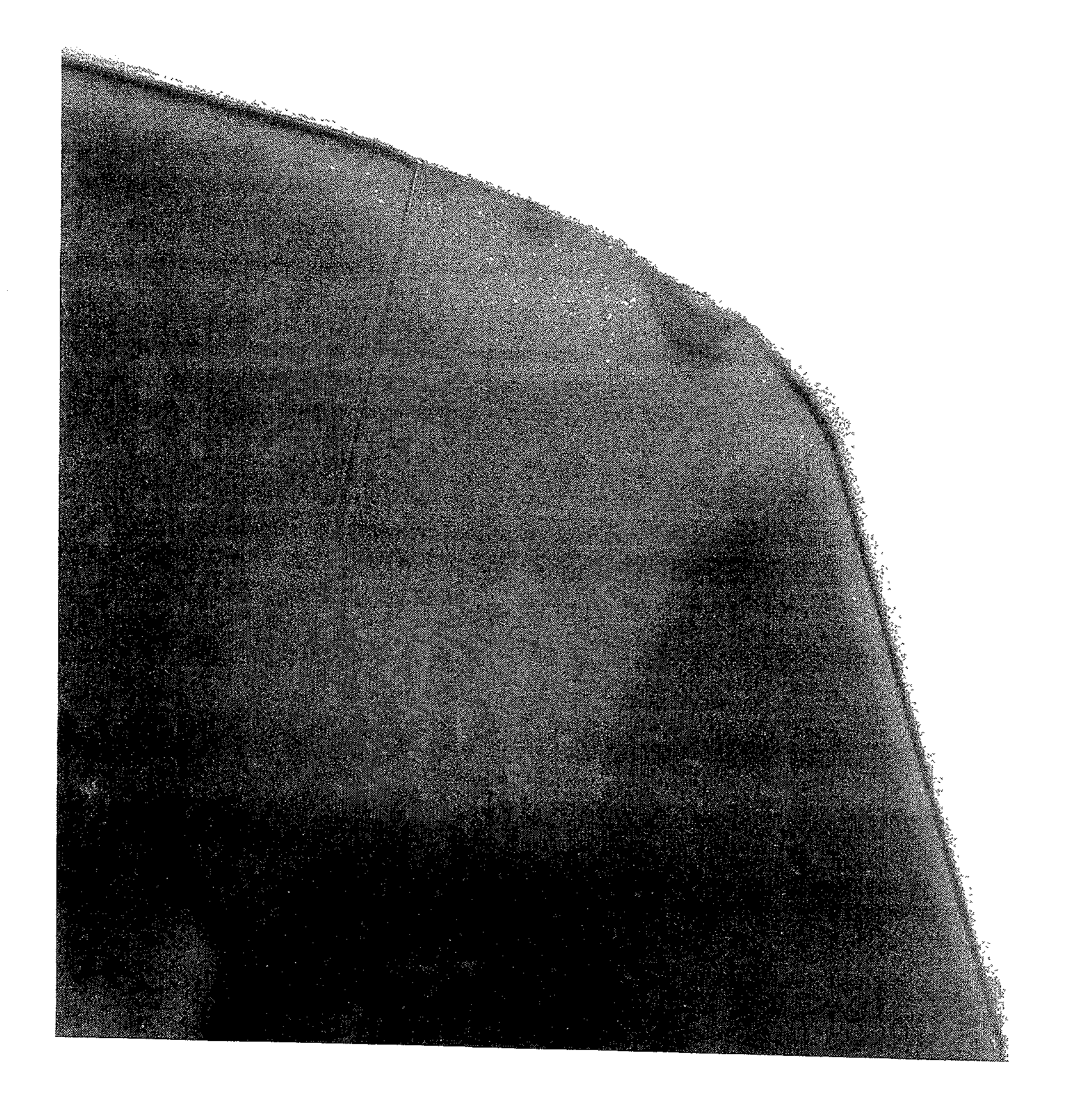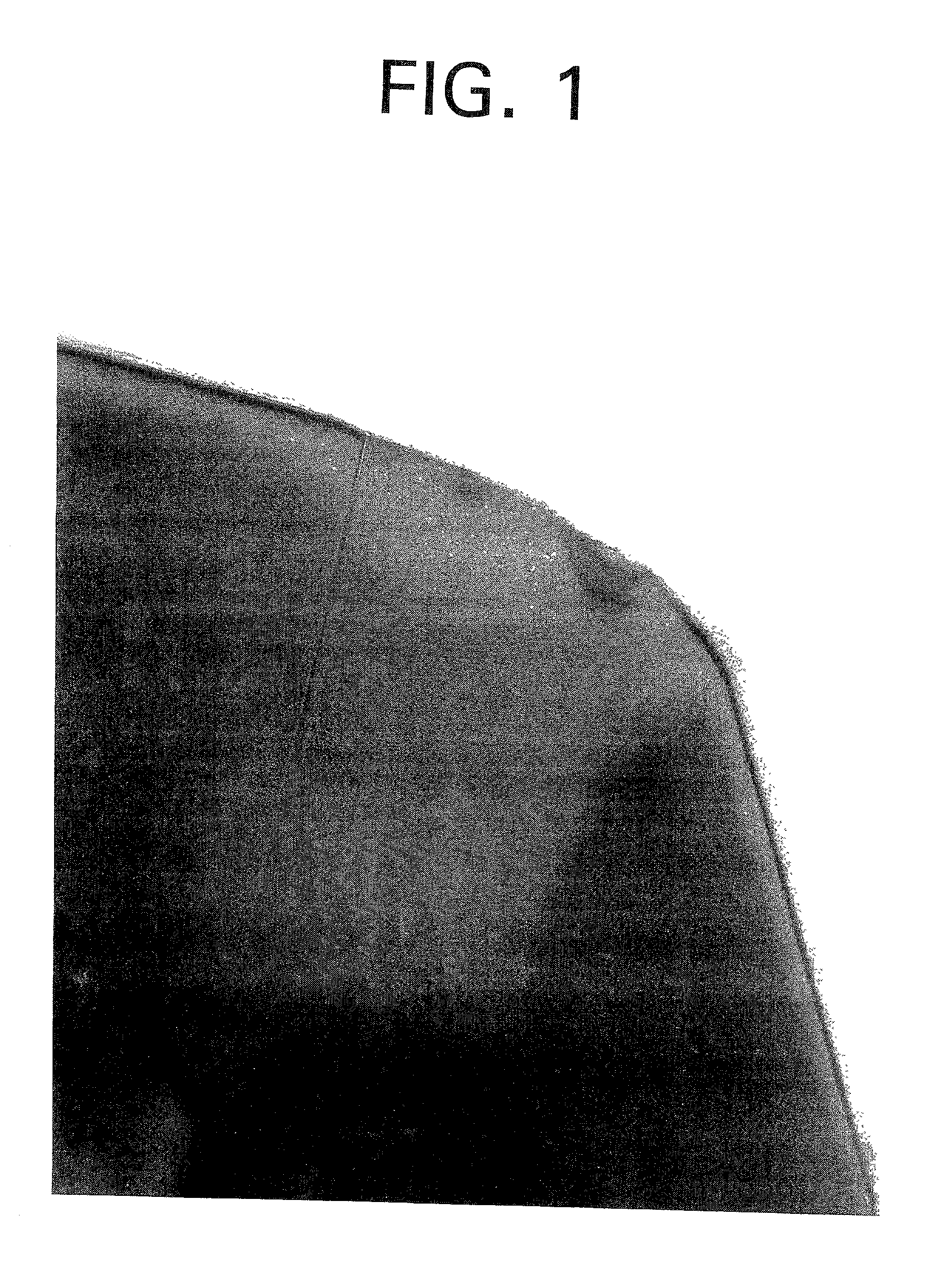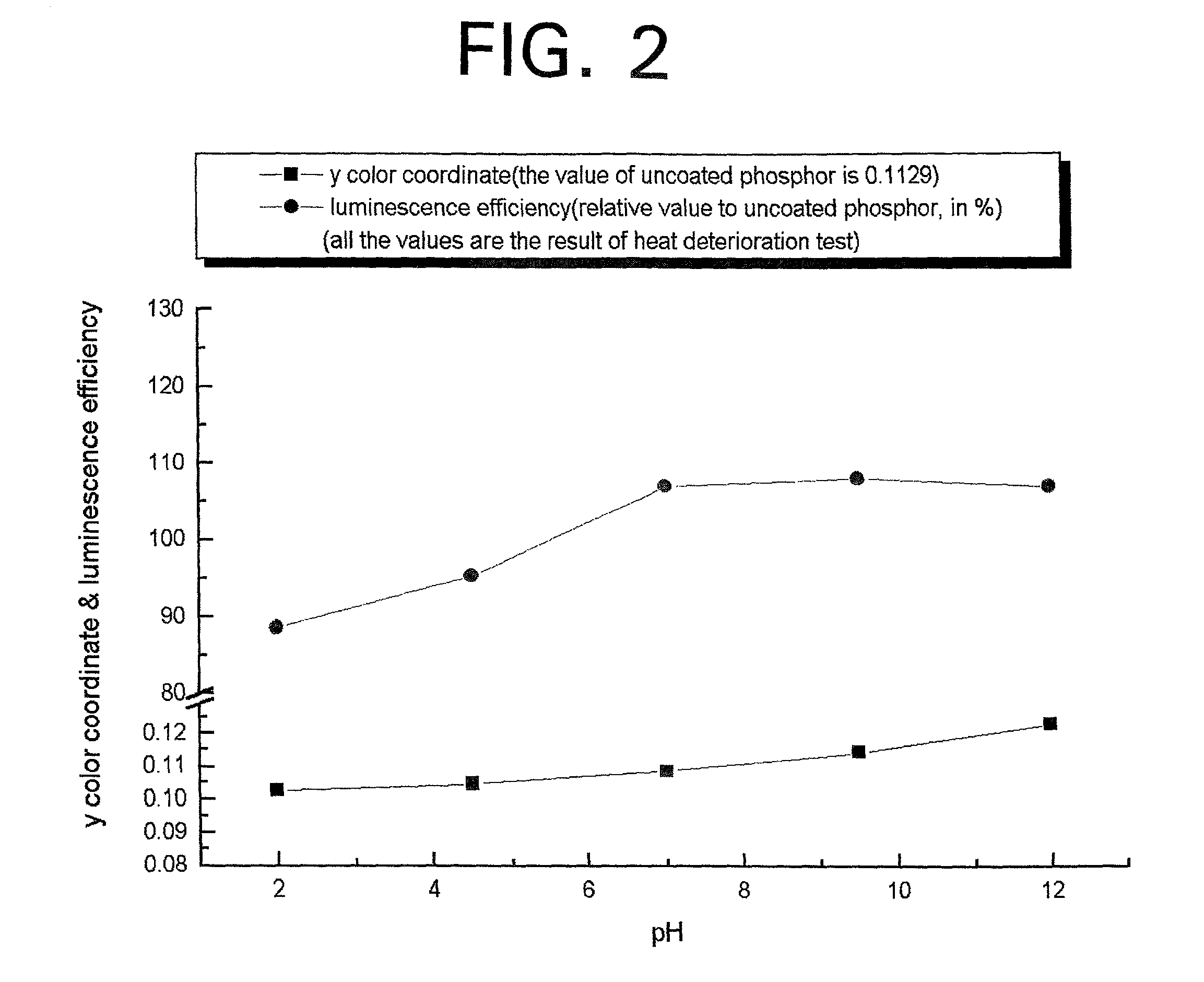Phosphor for a plasma display device coated with a continuous thin protective layer and method of manufacture
a technology of phosphor and protective layer, applied in the field of phosphor, can solve the problems of reducing optical characteristics, affecting the practical use of the device, and reducing luminan
- Summary
- Abstract
- Description
- Claims
- Application Information
AI Technical Summary
Problems solved by technology
Method used
Image
Examples
example 2
[0062] The phosphor was coated in the same manner as in Example 1, with the exception that the amount of TEOS was modified and the pH of the solution was set to 7.0. The amount of TEOS was modified such that the amount of the coating of SiO.sub.2 was adjusted to be 0.5, 1.0, 2.0, 4,0, 6.0, 8.0, and 10.0 wt % with respect to the weight of the phosphor.
[0063] FIG. 3 is a graph of the optical characteristic of the phosphors prepared in Example 2. FIG. 3 illustrates the optical characteristic, changes in the y-color coordinate and the luminescence efficiency according to the amount of the SiO.sub.2 coating, of the phosphors having a silica coating, in comparison with the optical characteristic of the phosphor not having a silica coating, after a heat deterioration test. As shown in FIG. 3, the luminescence efficiency varies depending on the amount of coating, but the y-color coordinate value is improved substantially. When considering the luminescence efficiency and the y-color coordina...
example 3
[0064] The phosphor was coated in the same manner as in Example 1, with the exception that the annealing temperature was modified to be 400, 600, 900, and 1200.degree. C. and the pH of the solution was set to 7.0.
[0065] FIG. 4 is a graph of the optical characteristic of the phosphors prepared in Example 3. FIG. 4 illustrates the optical characteristic, changes in the y-color coordinate and the luminescence efficiency according to the annealing temperature, of the phosphors having a silica coating, in comparison with the optical characteristic of the phosphor not having a silica coating, after a heat deterioration test. As shown in FIG. 4, the higher the annealing temperature, the better the y-color coordinate value and the worse the luminescence efficiency. But, when these two facts are considered, it can be seen that the optimal annealing temperature is about 900.degree. C.
example 4
[0066] The phosphor coated with alumina was manufactured in the same manner as in Example 1, with the exception that 7.5 g of aluminum sec-butoxide was used instead of 12 g of TEOS, the annealing temperature was 800.degree. C., and the pH of the solution was adjusted to 0.5, 2.0, 3.5, 5.0, and 6.5 using nitric acid instead of acetic acid.
[0067] FIG. 5 is a TEM analysis photograph of the phosphor coated at a pH of 2.0. The darker portion denotes the phosphor particle. It was confirmed that a continuous, thin film coating of Al.sub.2O.sub.3 was formed on the surface of the phosphor particle. The thickness of the coating was about 5-10 nm.
[0068] FIG. 6 is a graph of the optical characteristic of the phosphors prepared in Example 4. FIG. 6 illustrates the optical characteristic, changes in the y-color coordinate and the luminescence efficiency according to pH, of the phosphors having an alumina coating, in comparison with the optical characteristic of the phosphor not having an alumina ...
PUM
| Property | Measurement | Unit |
|---|---|---|
| Thickness | aaaaa | aaaaa |
| Temperature | aaaaa | aaaaa |
| Thickness | aaaaa | aaaaa |
Abstract
Description
Claims
Application Information
 Login to View More
Login to View More - R&D
- Intellectual Property
- Life Sciences
- Materials
- Tech Scout
- Unparalleled Data Quality
- Higher Quality Content
- 60% Fewer Hallucinations
Browse by: Latest US Patents, China's latest patents, Technical Efficacy Thesaurus, Application Domain, Technology Topic, Popular Technical Reports.
© 2025 PatSnap. All rights reserved.Legal|Privacy policy|Modern Slavery Act Transparency Statement|Sitemap|About US| Contact US: help@patsnap.com



